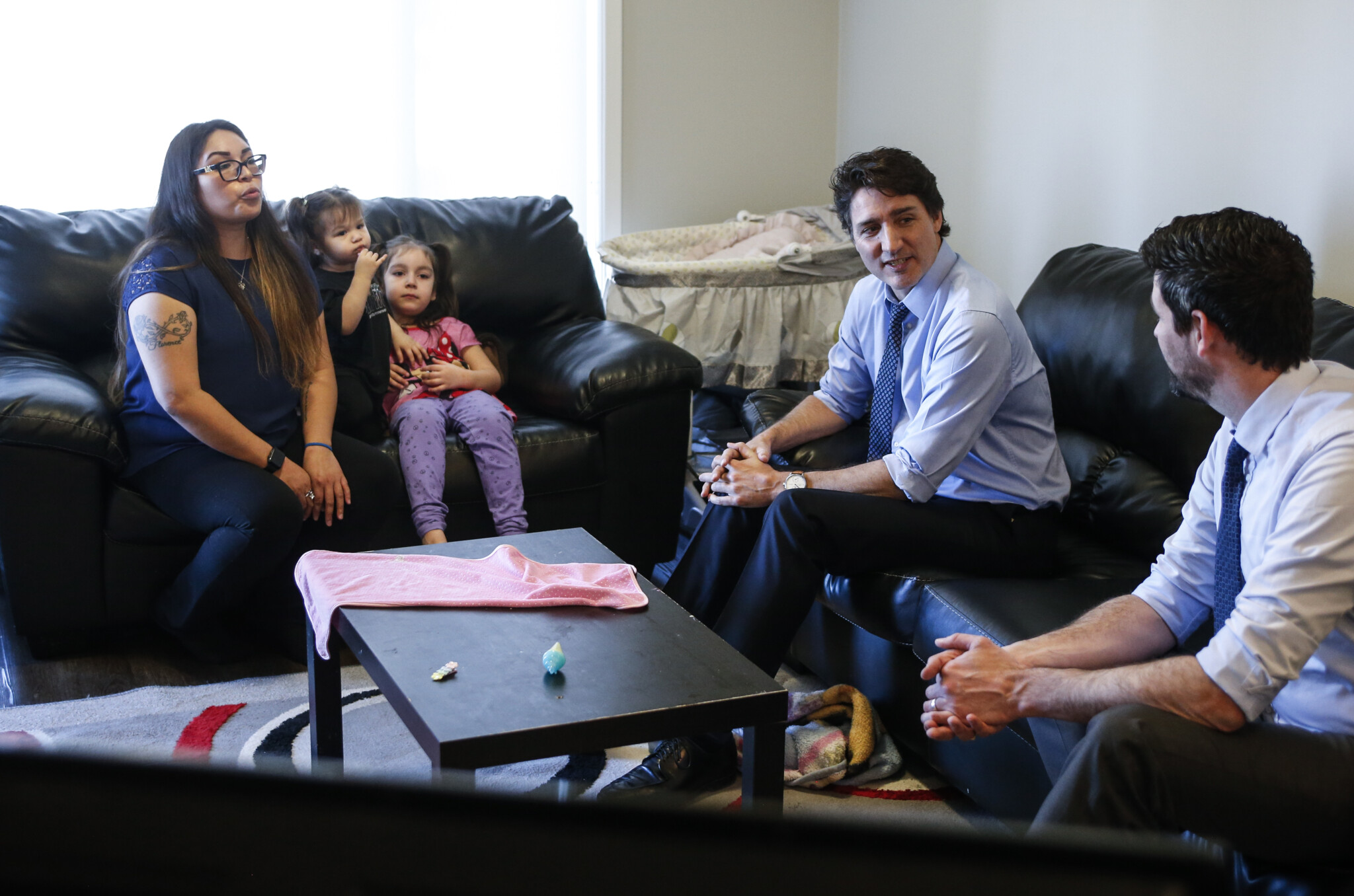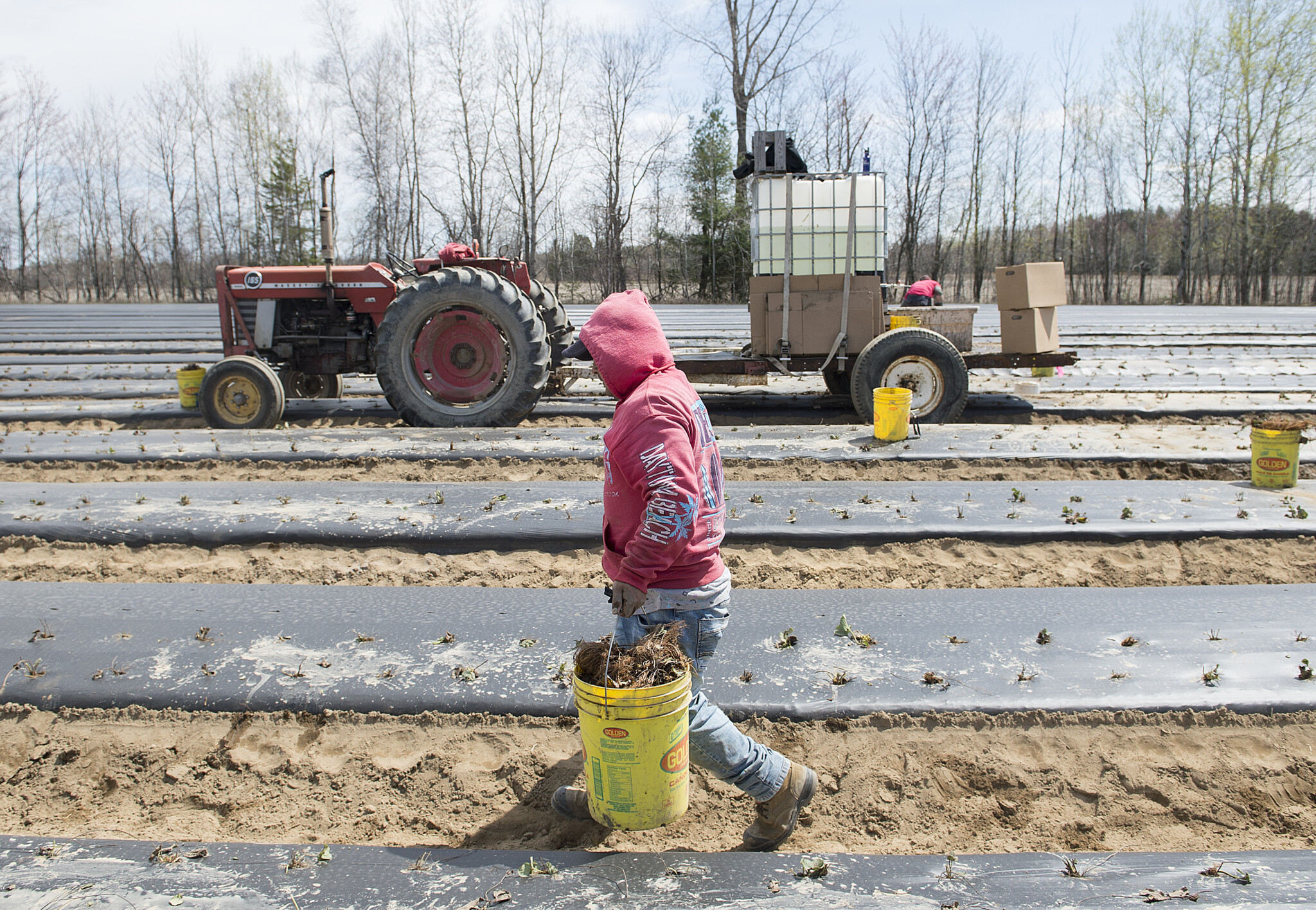The federal government’s annual cabinet retreat is taking place this week, with Liberal ministers on hand in Halifax to discuss the most pressing issues facing the country ahead of the fall legislative session. Immigration and housing are two of the biggest items on the agenda, in particular the drastic rise in the number of temporary foreign workers being employed in Canada over the past two years. Economist and Hub contributor Mike Moffatt was invited to Halifax to present on these issues. His remarks to cabinet are reproduced below.
In the next 54 minutes, Canada’s population will grow by 100 people.
In the next 54 minutes, Canada will start building 24 homes. Two-thirds of these will be apartments, and the majority of those will be one-bedroom or studio units.
Collectively, those 24 homes will house between 50-60 people. Let’s be generous and call it 65.
In the next 54 minutes, we will add 100 people, but only enough housing for 65 people, leaving the remainder, 35, effectively homeless. That’s 35 people, a group the size of the federal cabinet, with nowhere to call home. Every 54 minutes.
In the past three-and-a-half years, Canada’s population has grown by three million people, a few thousand people more than in the entire 1990s. The good news is that we’ve built as many apartment units as we did back then. The bad news is that we’ve built 900,000 fewer single-detached, semi-detached, and row homes. And the 1990s were arguably the worst post-war decade for homebuilding.
That’s the hole Canada has dug for itself: nearly one million family-sized homes in three-and-a-half years.
Like in other Anglosphere countries, Canada’s housing crisis was caused by disconnected housing and population growth policies. Let’s start with housing. In the past twenty years, development charges have risen by over 2000 percent in some Ontario cities. Land transfer taxes and other charges were introduced, which substantially raised the cost of housing and shifted the tax base from the old to the young. Land use policies became exceptionally restrictive, and the building code and other regulations made it all but impossible to make affordable family-sized apartment units. All orders of government treated a unit as a unit as a unit, under the erroneous belief that a 450 square-foot studio apartment is an adequate substitute for a child-friendly three-bedroom home.
Our population growth policies have been equally problematic. Our immigration system has shifted away from adding to the skills and cultural vibrancy of Canada to creating an underclass of guest workers. It has become a tool to allow provinces to cut funding to higher education. Once again, a transfer of wealth to the old from the young.
Fortunately, these are solvable problems, and I am encouraged that the federal government has taken substantial steps on both housing and population growth. More can be done—there is still a suite of unimplemented housing policy ideas in the National Housing Accord, the Blueprint for More and Better Housing, and from the Affordability Action Council. I would particularly encourage governments to focus on creating the conditions for family-friendly density—that is, units with three or more bedrooms. At a minimum, that will require building code changes, scaling back development charges to the levels of a decade ago, and increasing the GST rebate on new homes.

Prime Minister Justin Trudeau and Sean Fraser, Minister of Housing, Infrastructure and Communities meet with Jocelyn Smoke and her daughters in their apartment before an affordable housing press conference in Winnipeg, April 4, 2024. John Woods/The Canadian Press.
On population growth, yesterday’s temporary foreign worker reforms are welcome news, but Canada must go much further. The TFW program, particularly the low-wage non-agricultural stream, suppresses wage growth, increases youth unemployment, creates the conditions for the exploitation of foreign workers, and reduces productivity, as it disincentivizes companies from investing in productivity-enhancing equipment. The low-wage stream should be entirely abolished, and the other streams should be substantially reformed, including creating a system of open permits.
Population growth targets, including both permanent and non-permanent residents, and housing growth targets, should all be incorporated into the annual release of the Immigration Levels Plan. The targets must be aligned, to ensure population growth does not outpace homebuilding, which will require substantial reductions in the permanent resident target over the next few years.
Like most economists, I support a robust immigration system and believe the current targets are achievable in the long run. In the meantime, however, we need to give ourselves time to allow homebuilding to catch up to past population growth, requiring a substantial reduction in the permanent resident target back to the levels of a decade ago.
We should be clear that this is not about blaming immigrants for Canada’s issues. Rather we must recognize that when we invite people to our country, we need to ensure that we have in place the conditions for them to succeed. We do them no favours, and us no favours, by setting them up to fail.
And we should be clear that we are setting people up to fail, particularly Millennials and Gen Z. Rents on new leases in Halifax are up 75 percent in the past five years. It should come as no surprise that the 2024 World Happiness Report found that Canadians under the age of 30 are the 58th happiest in the world. They are being denied a path to middle-class prosperity.
We can and must do better. Thank you for having me here today.









